KaOS 2025.03
It is a great pleasure to present to you the March release of a new stable ISO.
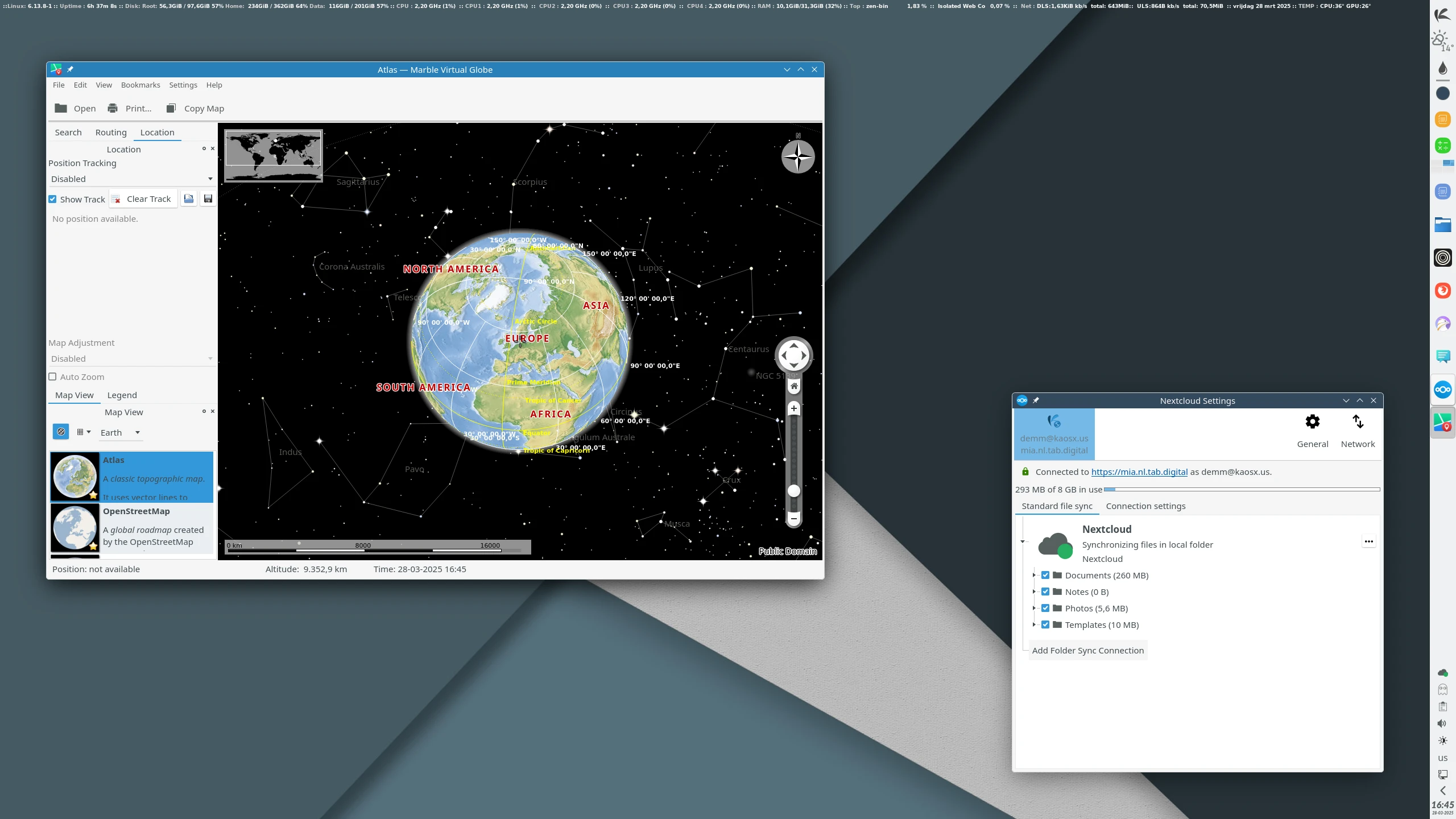
For the Plasma desktop, the latest Plasma (6.3.3), KDE Gear (24.12.3), and Frameworks (6.12.0) are included. All built on Qt 6.8.3. Among the many changes included in Plasma 6.3 are, the System Settings’ Drawing Tablet page has been overhauled and split into multiple tabs to improve how things are organized, most important news regarding graphics is a huge overhaul of how fractional scaling works, screen colors are more accurate when using the Night Light, Info Center also provides more information, exposing data about all of your GPUs as well as your batteries’ cycle counts and the default Kickoff launcher menu now switches categories only when you click on them.
KWin Zoom, pinpoint individual pixels
More application are now ready to use Qt6 and Frameworks 6 including Krita, Scribus, QTox, Bibletime and GCompris.
Updates to the base of the system were numerous and included Boost 1.87.0, ICU 76.1, SQlite 3.49.1, Pacman 7.0.0, kmod 34.2, IWD 3.5, Poppler 25.03.0, Gstreamer 1.26.0, Pipewire 1.4.1, kernel moved to Linux 6.13.8, Systemd 254.24, ZFS 2.3.1, Tzdata 2025b, OpenSSL 3.4.1, Proj 9.6.0, Protobuf 30.1 and Mesa 25.0.2.
Among the new packages included is Nextcloud-client, an opensource sync client for Nextcloud.
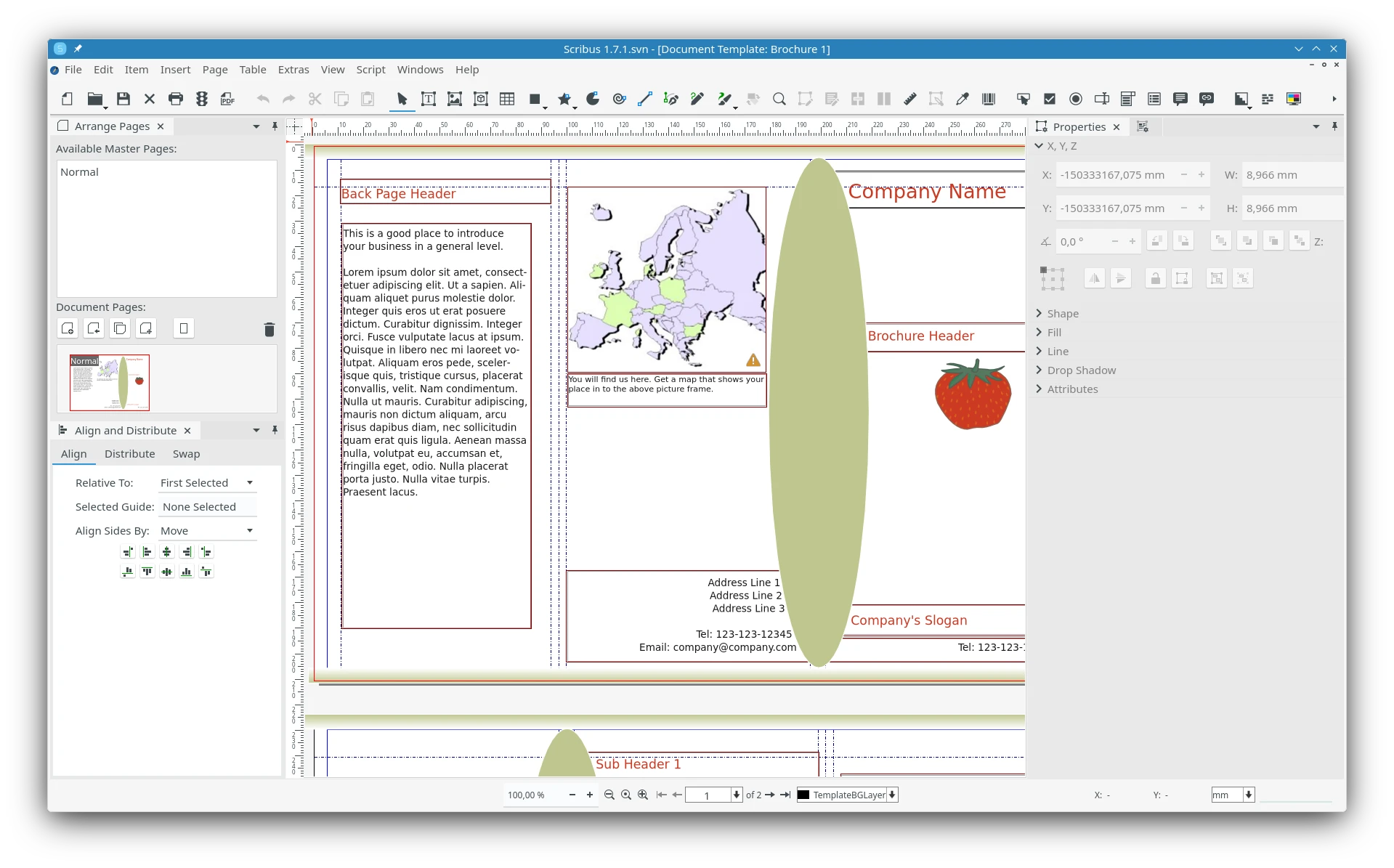 Scribus Qt6 based
Scribus Qt6 based
Support has been added for the new filesystem bcachefs, it is still in experimental stage, but is included in the kernel build, and the needed bcachefs-tools are available in the repositories. Calamares can use bcachefs when used in manual mode, though no specific settings for this filesystem have been implemented yet.
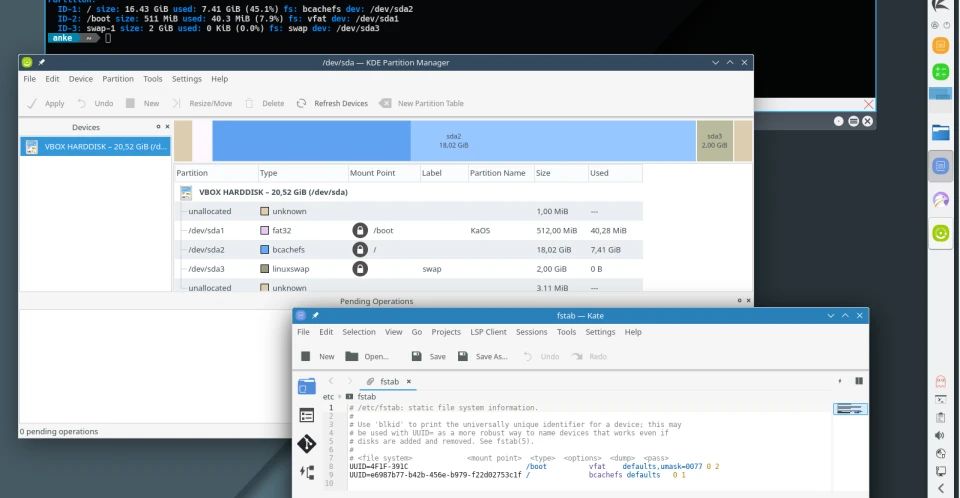 Bcachefs used for an installation
Bcachefs used for an installation
A new Phonon sound backend is in use. So far VLC was used, but there is no Qt6 porting for VLC yet. Using phonon-mpv as default now gives a fully Qt6-ready backend.
Four years after being end of life, GTK2 is finally removed from the KaOS repositories. The one major application left that still required GTK2 was Ardour, but with 8.4.0, an internal YTK is used, thus GTK2 is now gone.
SDDM 0.20.0 added the option to run this display manager in Wayland mode, so KaOS is one step closer to being ready to move away from X11. The shell used to run in Wayland mode is kwin_wayland (upstream default is using Weston).
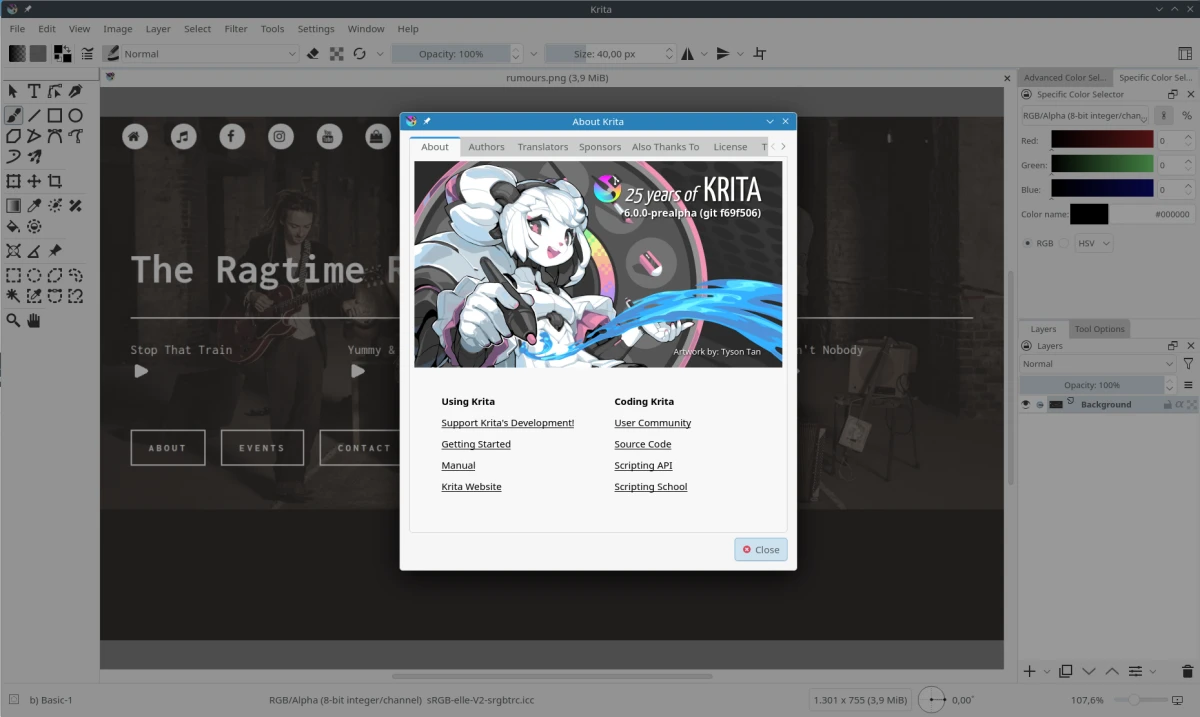 Krita Qt6 based
Krita Qt6 based
The automated partitioning option in the installer (Calamares) offers the use of all popular filesystems, so no need to use manual partitioning to be able to choose XFS, EXT4, BTRFS, or ZFS.
Big thanks goes to YourHostingSolutions for not only providing a mirror, but also providing a server for KaOS. With the discontinuation of Fosshost, a new server was sorely needed.
Getting good logs has always been a bit of a challenge since you have to know what journalctl commands to use. That is now a thing of the past, Kjournald gives the option to view the logs from a nice GUI, with all kinds of filter options in the left-hand pane (it is part of the default install)
Common Notes
The Linux kernel has all the needed ucode build-in for a fully automated Early Microcode update.
KaOS uses the Systemd-provided Systemd-boot for UEFI installs.
KaOS’ creation Croeso (Welsh for welcome) for helping with configuring a new installation is included. It will run on the newly installed system and offers to adjust some 15 commonly used settings, includes a custom Wallpaper selector, distribution info, and the option to select packages to install from six different groups. It is written in QML and fits well with the Welcome application used in the Live system. The latter includes an Installation Guide.
This ISO uses the CRC and finobt enabled XFS filesystem as default. CRCs enable enhanced error detection due to hardware issues, whilst the format changes also improves crash recovery algorithms and the ability of various tools to validate and repair metadata corruptions when they are found. The free inode btree does not index used inodes, allowing faster, more consistent inode allocation performance as filesystems age.
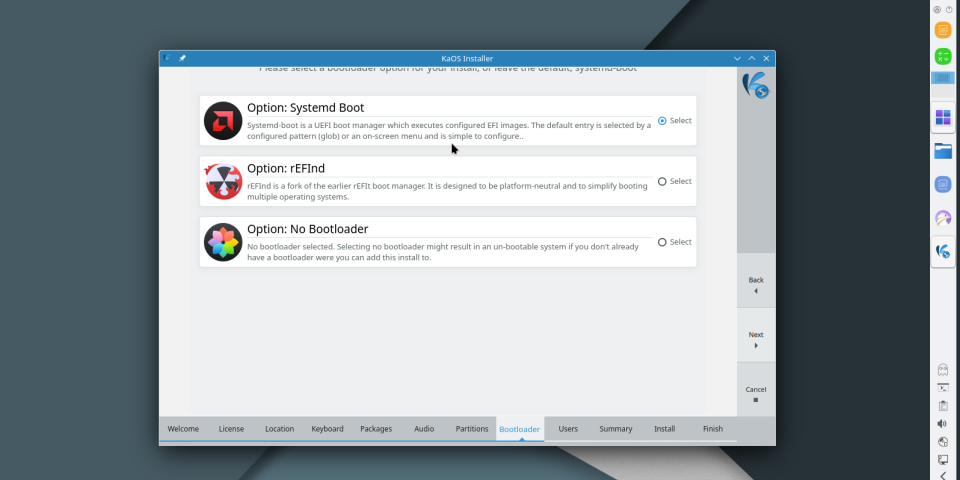 Bootloader Selection
The artwork includes a custom icon theme for light themes. Midna creates a complete, unified look from boot-up all the way through logout.
Bootloader Selection
The artwork includes a custom icon theme for light themes. Midna creates a complete, unified look from boot-up all the way through logout.
There is an option to verify the authenticity of downloaded KaOS ISO files through GPG signature verification, see the Download page for further details and instructions.
Known issues:
- Installing on RAID is currently not possible
To create reliable installation media, please follow the instructions from the Download page. KaOS ISO’s do not support Unetbootin or Rufus, and DVDs need a burn speed no higher than 4x.